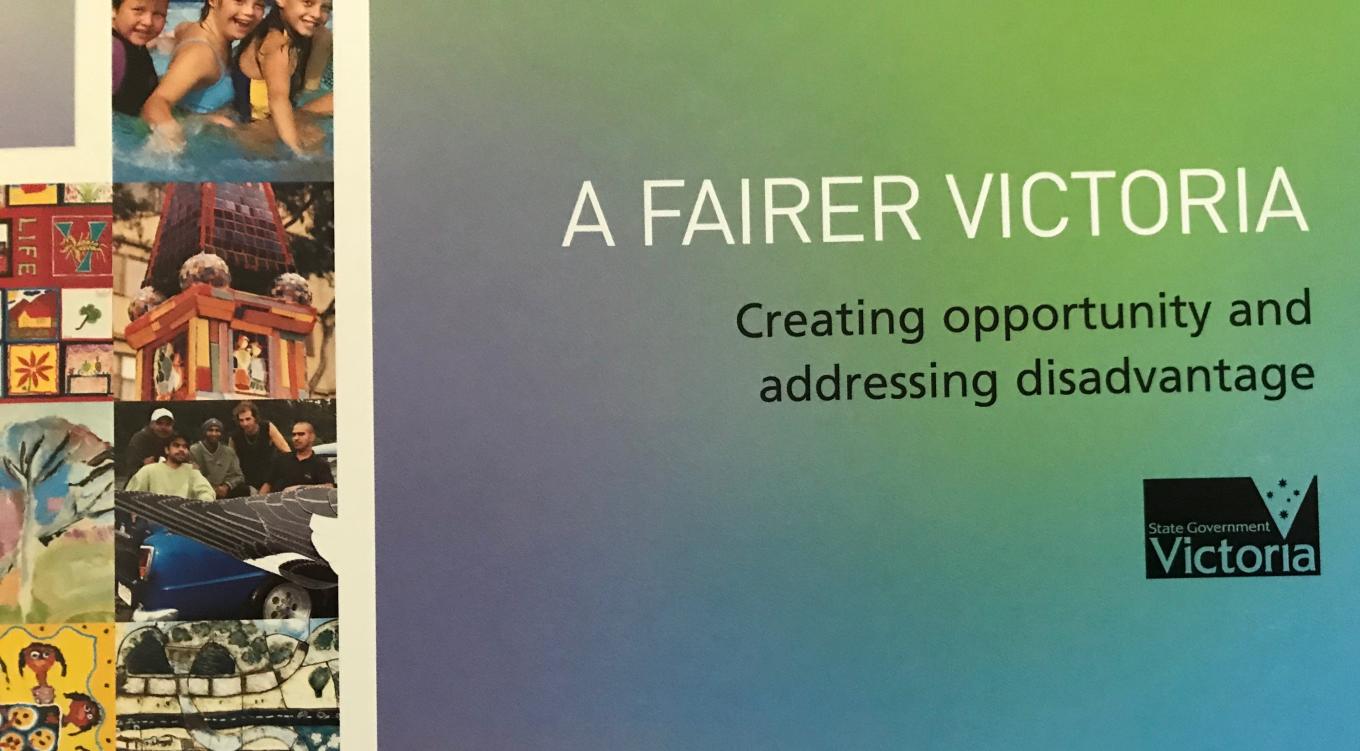Tuesday 1st of January 2019
The first day of 2019 heralds not just a new year but also the commencement of the Victorian machinery of government changes announced in late 2018. One such change is the new Fairer Victoria division in the Department of Premier and Cabinet (DPC). The unit brings together the Office of Women, Youth Affairs, Veterans, Multicultural Affairs and Equality portfolios. It has been reported that this will “elevate consideration of these key groups to the centre of government”.
Those whose memory harks back to the second term of the Bracks’ government would have smiled wryly at both the mention of Fairer Victoria and the population portfolio division. In 2005, the Bracks Government released A Fairer Victoria, a social policy action plan aimed at tackling the structural and systemic causes of disadvantage. The policy framework focussed on removing barriers to opportunity and increasing social and economic participation. A targeted $788 million investment in new initiatives and reforms accompanied the policy framework. The framework endured with an iteration of A Fairer Victoria released annually until 2008.

A new government department was also created during the second term of Bracks’ government in 2002. The Department for Victorian Communities (DVC) brought together population portfolios and other units from different departments. These included the Office of Women, Youth Affairs, Office for Senior Victorians, Multicultural Affairs and Aboriginal Affairs as well as Sport and Recreation and Local Government. The new department’s mandate was focussed on building stronger Victorian communities.
Fast forward to 2019 and a mini population portfolio akin to DVC has been established in DPC under the nomenclature of Fairer Victoria. While there are similarities, there are also differences. Under the new arrangements, Senior Victorians remains at the Department of Health and Human Services and Aboriginal Victoria stays as a separate unit in DPC’s Social Policy Group.
Presumably the portfolio groups have been brought together for reasons more than just being at the centre of government. Perhaps the title of the new unit is hinting at something else – a potential Fairer Victoria mark II. This will present both challenges and opportunities. A major challenge for the division will be the juggling act inherent in supporting five separate portfolios, each with their respective Minister and distinct stakeholder groups and portfolio priorities, including the delivery of the second term election commitments.
The opportunity will be to find a broader unifying policy narrative that brings the portfolios together. Victoria could look to Canada for possible directions. In a keynote speech to the World Economic Forum in 2016, Prime Minister Trudeau was unambiguous about the need to acknowledge diversity as a source of strength, not a source of weakness. He saw diversity as more than just sound social policy and described it as the engine of innovation.
Trudeau has continued advocating a strong case for diversity, arguing Canada’s diverse and multicultural society provides a comparative advantage that leads to greater economic and social prosperity. Concrete measures have backed the rhetoric. The most recent Canadian federal budget had the theme of Equality + Growth and included a raft of measures to encourage workforce diversity including funding to support women, visible and religious minorities, and migrants.
It is obviously early days for the new Fairer Victoria division but this will be a policy space to watch as the year unfolds.
Postscript
The new Department of Jobs, Precincts and Regions is also part of the machinery of government changes. It came into effect on 1 January 2019 and has published its organisation chart. It shows an Inclusion division with a Social and Economic Inclusion business unit. Its policy priorities and relationship with Fairer Victoria will be another interesting space to watch.
Disclosure statement
The author was part of the project team that delivered A Fairer Victoria in 2005.